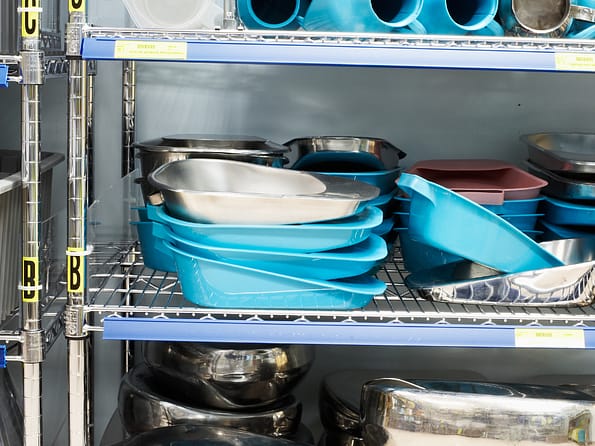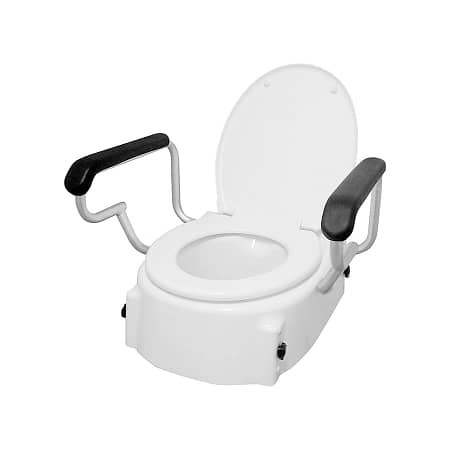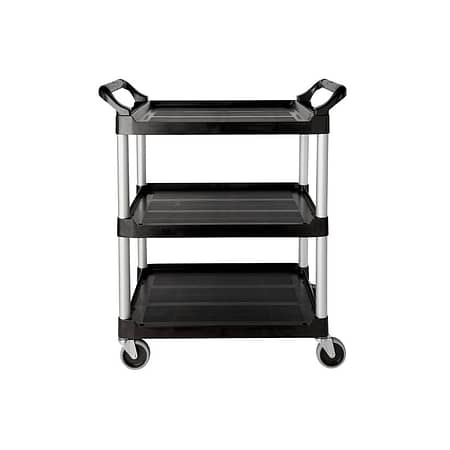Urology bedpans and urinals are essential aids in patient care, especially for individuals who are bedridden or have limited mobility. These devices are designed to assist patients in performing basic bodily functions with ease and dignity. Bedpans are typically used for both urinary and fecal discharge, while urinals are specifically designed for urine collection. They come in various shapes, sizes, and materials to cater to a wide range of patient needs and clinical scenarios.
Importance of Patient Comfort and Convenience
The selection of appropriate urology bedpans and urinals is critical in ensuring patient comfort and convenience. Properly chosen aids can significantly reduce the discomfort and embarrassment associated with the inability to use traditional restroom facilities. They also play a vital role in maintaining hygiene and preventing infection. Comfort and convenience in using these aids can have a direct impact on a patient’s dignity and overall well-being during their care.
Types of Urology Bedpans and Urinals
Differentiating Between Bedpan and Urinal Types
Bedpans come in various types, such as standard, bariatric, fracture, and pediatric bedpans, each designed for specific patient needs. Standard bedpans are the most common and are suitable for a broad range of patients, while bariatric bedpans are designed for heavier patients. Fracture bedpans have a lower profile and are ideal for patients with limited mobility, particularly those recovering from hip surgery. Pediatric bedpans are smaller in size, tailored for children.
Urinals also vary in design, with male and female versions available. Male urinals are typically bottle-shaped with a handle, whereas female urinals are designed with wider openings and ergonomic shapes to accommodate the female anatomy.
Pros and Cons of Each Type
Each type of bedpan and urinal has its advantages and limitations. For instance, standard bedpans are versatile but may not be comfortable for all patient types, especially those with mobility issues. Fracture bedpans, while more comfortable for certain patients, might not be suitable for others due to their lower capacity. Male urinals are generally easy to use but may not be suitable for patients with severe mobility restrictions. Female urinals offer more comfort for female anatomy but might require more careful positioning.
Factors Influencing the Choice of Bedpans and Urinals

Patient Needs and Conditions
The choice of a bedpan or urinal should be based on individual patient needs and conditions. Factors such as the patient’s mobility level, weight, age, and the nature of their condition (e.g., postoperative recovery, chronic illness) play a crucial role in determining the most suitable type. For example, bedridden patients might require a different type of bedpan compared to those with some degree of mobility.
Ease of Use and Maintenance
Ease of use is a critical factor for both patients and caregivers. Bedpans and urinals should be easy to position and remove with minimal discomfort to the patient. They should also be simple to clean and maintain, as proper hygiene is vital to prevent infections. Disposable options might offer convenience but may not be as sturdy or comfortable as reusable ones, which require regular cleaning and sterilization.
Ergonomics and Design Considerations
Design Features for Enhanced Comfort
Ergonomic design in urology aids is crucial for enhancing patient comfort and ease of use. Bedpans and urinals are being designed with features like contoured edges, soft materials, and adjustable angles to minimize discomfort and pressure points. For bedpans, this might include a tapered shape for easier placement under the patient, while urinals may have anti-spill designs or handles for better grip. These features not only improve the patient experience but also aid in the efficiency of care provided by healthcare staff.
Innovative Designs for Special Needs
For patients with specific requirements, such as bariatric patients or children, innovative designs in urology aids are essential. Bariatric bedpans, for example, are larger and sturdier to accommodate higher weight capacities, while pediatric bedpans are smaller in size and more comfortably shaped for young patients. These specialized designs ensure that all patients have access to urology aids that suit their unique physical needs.
Hygiene and Safety Standards
Hygiene Considerations in Urology Aids
Hygiene is a primary concern in the design and use of bedpans and urinals. Materials that are easy to clean and resistant to bacteria are preferred. Many modern urology aids are made with antimicrobial coatings to prevent the growth of harmful bacteria. Additionally, the design should allow for easy and thorough cleaning, reducing the risk of urinary tract infections and other hygiene-related complications.
Safety and Infection Control Measures
Safety features in urology aids are vital to prevent infections and accidents. This includes smooth, non-porous surfaces that reduce the likelihood of bacterial growth and designs that prevent spillage and leakage. Ensuring that these aids are properly sterilized and handled with care is a critical part of infection control in healthcare settings.
Patient Dignity and Privacy
Ensuring Dignity in Urology Care
Maintaining patient dignity is a key aspect of providing urology care. This involves choosing bedpans and urinals that are easy to use discreetly, thereby reducing any potential embarrassment for the patient. The design of these aids should enable patients to use them with minimal exposure and assistance, whenever possible, to promote a sense of independence and dignity.
Training for Healthcare Staff
Proper training for healthcare staff in the use of urology aids is essential. This training should include not only the technical aspects of how to use and clean these aids but also guidance on how to provide care respectfully and sensitively. Staff should be trained to approach situations with empathy, ensuring that they uphold the dignity and privacy of patients while assisting with these intimate tasks.
Material and Durability Concerns
Assessing Material Quality
The materials used in the construction of urology bedpans and urinals play a significant role in their durability and patient comfort. Common materials include medical-grade plastic and stainless steel. Plastic is lightweight, less expensive, and can be molded into ergonomic shapes for comfort. However, it might not be as durable as stainless steel. Stainless steel, on the other hand, is known for its durability and ease of cleaning, but it can be heavier and less comfortable in terms of temperature and feel against the skin. The choice of material should be based on the specific needs of the healthcare setting and patient preferences.
Longevity and Cost-Effectiveness
When selecting bedpans and urinals, it’s important to balance longevity with cost-effectiveness. Durable materials like stainless steel may have a higher upfront cost but can be more cost-effective in the long run due to their longevity. Plastic options might be more affordable and suitable for short-term use or where frequent replacement is feasible. The decision should consider the expected frequency of use, the care setting, and budget constraints.
Conclusion
In choosing the right bedpan and urinal for patient comfort and convenience, key considerations include the ergonomic design for enhanced comfort, materials that ensure durability and hygiene, and the adaptability of these aids to meet the specific needs of different patients. It’s essential to balance these factors with the practical aspects of use and maintenance, as well as respecting patient dignity and privacy throughout the care process.





















